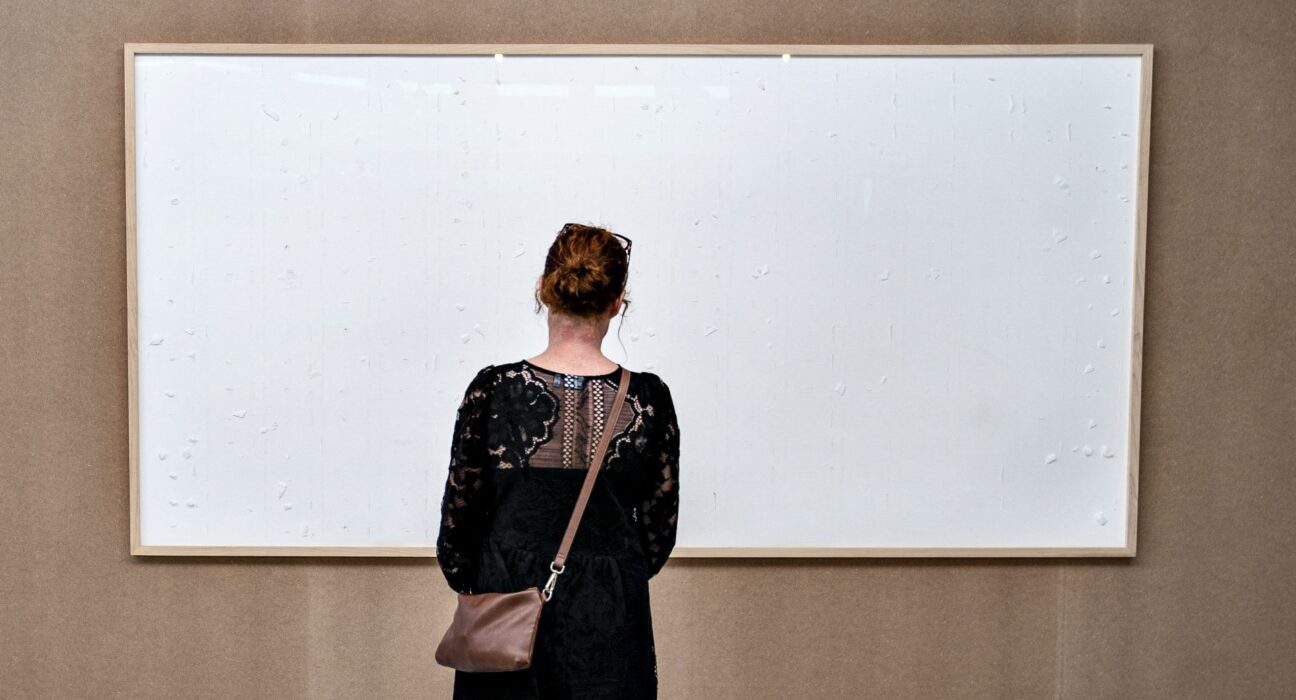It’s a question that has divided the art world since man first doodled on a cave wall and demanded a juicy mammoth steak in return. How much brass neck – and brass – can an artist get away with?
Marcel Duchamp shocked art lovers in 1917 when he signed a urinal and called it a “readymade” – but most critics now believe he opened the door for Andy Warhol, Pop Art and conceptual art. The Italian artist Piero Manzoni confirmed the suspicions of many about modern art when he produced tins of what he said was human waste, to put it no more graphically, in a family publication. A friend of Manzoni said Merda d’artista (1961), as this provocation was called, was “an act of defiant mockery of the art world, artists, and art criticism”. But in 2016, one can sold for £240,000 to a collector who was flush with cash.
Art or rip-off? A Danish artist has put the “con” into this conundrum all over again with a work he calls Take the Money and Run. Jens Haaning, 58, was given a pile of cash by a Danish museum, which expected him to put it in frames to represent the average income of people in Denmark and Austria. Instead, Haaning kept the banknotes and presented astonished curators with two blank canvases. Now a court in Denmark has ordered him to pay back £58,000 to the Kunsten Museum in Aalborg, a city in the north-west of the country.
But the artist told me that not only has he no intention of complying with the order, he couldn’t even if he wanted to: he’s already spent the cash. Take the Money and Run has become Can’t Pay, Won’t Pay. Haaning said: “I’m not in the position that I can pay the money back right now. It’s gone on living expenses and supermarkets and rent.”
He has been given two weeks to comply with the court order but, having already taken the money, he says “it could be an option” for him to go on the run as well. For now, though, he’s more likely to appeal against the judgment.
At the time he delivered his empty frames to the museum in 2021, Haaning denied he’d stolen the money. “It’s not theft. It is a breach of contract, and breach of contract is part of the work.”
At first, the museum saw the funny side. Lasse Andersson, the director, reportedly laughed out loud when he was confronted with the blank canvases. He decided to display the works anyway, saying they had a “humoristic approach” and were “a reflection on how we value work”. But he insisted the museum would take legal action against Haaning unless he gave the money back.
Speaking from his home in the Danish countryside, Haaning said he was angry about the way he has been treated. “The museum has put my works on show, they accept they’re art. Actually, they have benefited big time from this piece. It’s been in all the papers and internet platforms, you know? I think they have cashed in big time. If they want to be on solid ground, they should just have taken my work to the storage.”
He said the idea of Take the Money and Run came to him three months before he was due to deliver his artwork. He was paid €5,000 – about £4,340 – but became frustrated in discussions with the museum over his expenses. He had to travel back and forth to Germany at the time of the pandemic to get the frames he wanted.
“So me and an assistant needed to go to Berlin to sit in quarantine for a week before we could go to the framers. I said to the museum: ‘could you at least pre-pay something for this week in a hotel in Berlin?’ And they were like ‘No, no, no!’ So I went for a walk and suddenly I got a better idea!”
Haaning, who was born in Denmark in 1965, has shown his work in many countries, including the UK, where he exhibited at the Institute of Contemporary Art in London in 2003. He is an aficionado of the outrageous gesture that cocks a snook at money. He cherishes the memory of the British dance band the KLF allegedly incinerating £1m on the Scottish island of Jura in 1994. He said: “That was a very important event for me years ago. I can recall how it looked. It was shot on a very bad VHS movie. You can’t see if it’s newspapers or money or whatever that they’re burning!”
Haaning admits that the controversy over Take the Money and Run has brought him lots of publicity.
“Yes it has, but I don’t see it as an act of publicity. People say, ‘Oh it’s almost a performance’. But basically it’s two frames in a museum, eh? And then it’s about absence, absence of money, you know? But, yes, there’s been an enormous amount of publicity, which I will maybe never get again.”
A similar furore surrounded the emergence of the Young British Artists in the 1980s: the infamous show featuring their work was called Sensation. My Bed by Tracey Emin is now seen by some as prescient, highlighting society’s conflicted attitudes to female sexuality. Even Damien Hirst’s shark in a tank, The Physical Impossibility of Death in the Mind of Someone Living, could be read as a wake-up call to looming eco-catastrophe, whether the artist intended it or not.
For his part, Haaning suspects that his pictures of money that never were will end up as his best-known works, but he can live with that. “The concept is nice! Let’s say you are wandering in some market in Africa or Romania or wherever and then you think, ‘Oh there was this white spoiled brat up in Denmark, yeah, who just took all this money!’ This is a nice fairytale!”
Stephen Smith is a writer and broadcaster







